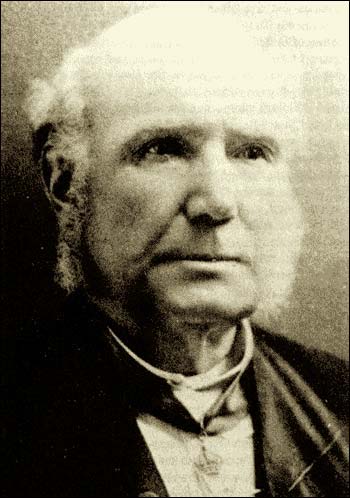The Denominational Compromise
After 1832, two political parties emerged. The Conservative party was largely composed of Protestants, and was closely associated with the colony's administrative and mercantile elite, many of whom were Anglicans. The Liberal or Reform party, on the other hand, represented the Roman Catholic population of Irish birth or descent, and was closely associated with the Roman Catholic Church.
The sectarian nature of local politics came to a head during the campaign for responsible government, which began around 1850. The campaign was spearheaded by the Liberals, who saw responsible government as the vehicle which would give them, and those who supported them, patronage and power. In this sense it was a fight by the "outs" against the "ins", and the Liberals were supported on this issue by many members of the Methodist Church, who also felt excluded from power. The Conservatives, fearing the loss of power and influence, opposed responsible government, and argued that a Liberal government would mean rule from the Bishop's Palace. There were bitter arguments over the distribution of seats in an enlarged House of Assembly - which was done on a denominational basis - exacerbated by disputes over education, caused by the Anglican Church's demand for its own schools.
Responsible government was granted in 1855, with a Liberal administration. Within a few years, though, the Liberals party had lost Methodist support, and it became clear that so long as it had only thirteen "Catholic" seats in a 30-seat Assembly and was viewed as a "Catholic" party, it would never form another government. This was an important reason for the political compromise between Catholics and Protestants that emerged after 1860. In essence, the denominational compromise may be defined as the establishment of an unwritten rule that every government should contain representatives from the major denominations.

Leading Catholic politicians joined Frederic Carter's Conservative government in 1865, and seats in the legislature were adjusted according to denominational factors. It was also accepted that positions in the public service of the colony, from the Supreme Court bench to ferry men and Customs clerks, should be allocated in such a way that each denomination received a proportionate share of both jobs and the salary budget. Finally, in 1874, each of the major denominations was given the right to run its own schools.
Denominational rivalry was therefore institutionalized after 1860 by a general agreement that the members of each Church would be treated fairly and equally. This allowed the emergence of non-sectarian political parties, and an end to the bitter sectarian quarrels which had characterised politics before 1860. Religious and ethnic prejudices remained embedded in society for many years, but it is probable that the compromise prevented Newfoundland from becoming a transatlantic Ulster. It was a distinguishing feature of responsible government in Newfoundland, and its principles persisted into the second half of the 20th century.




